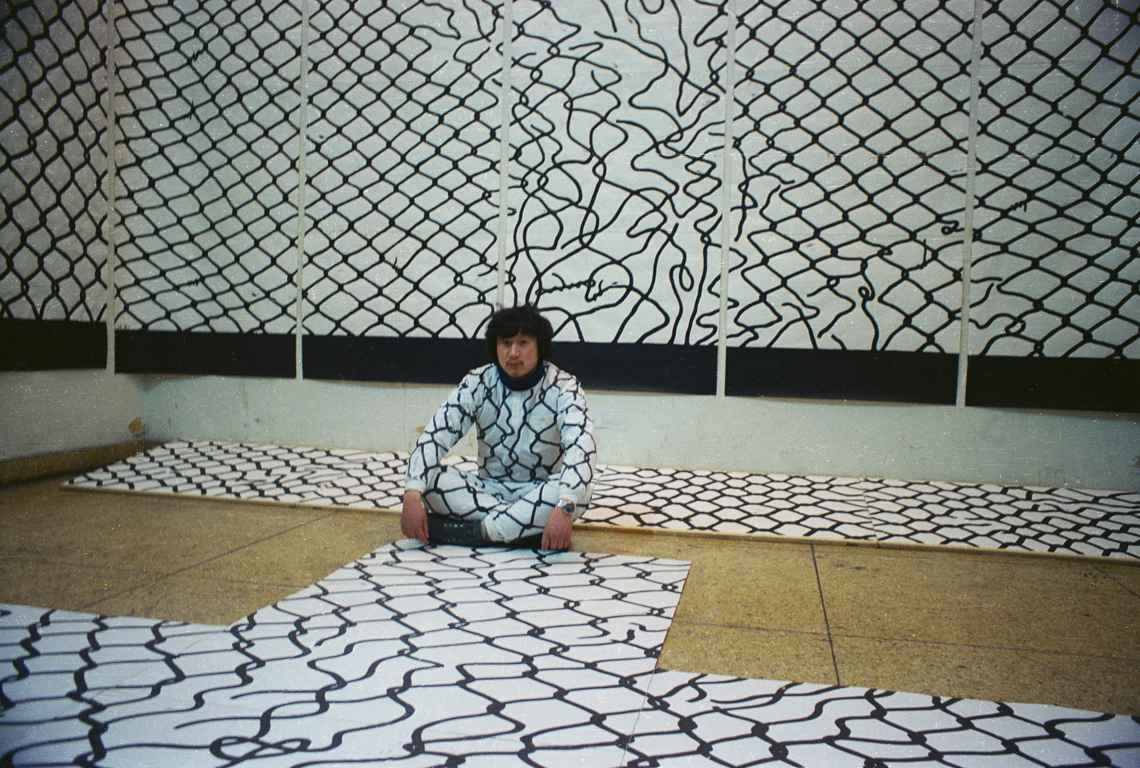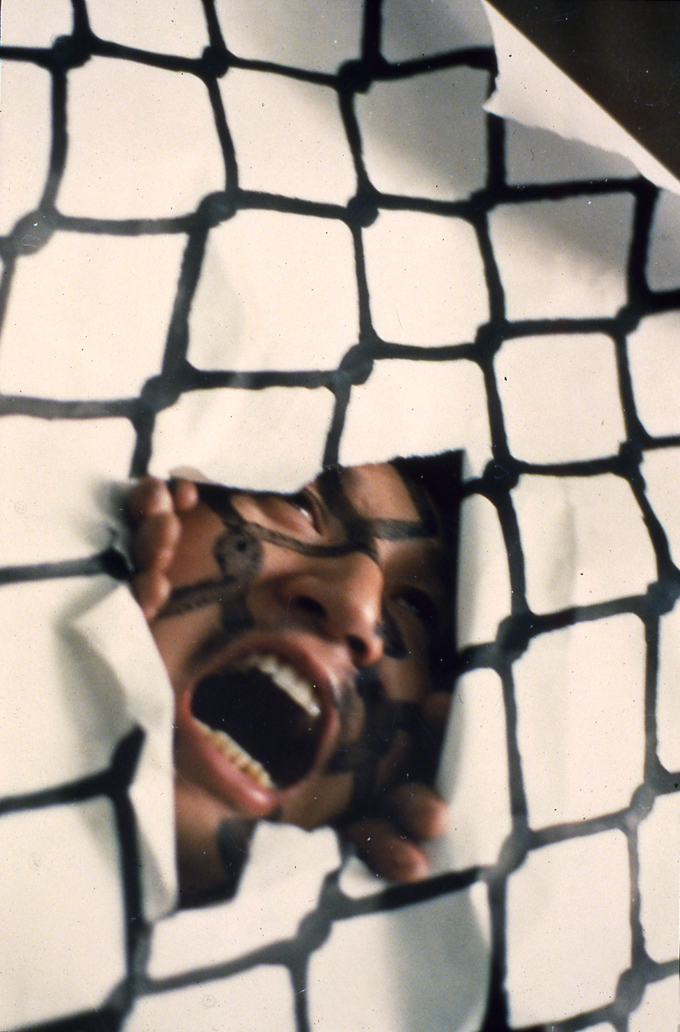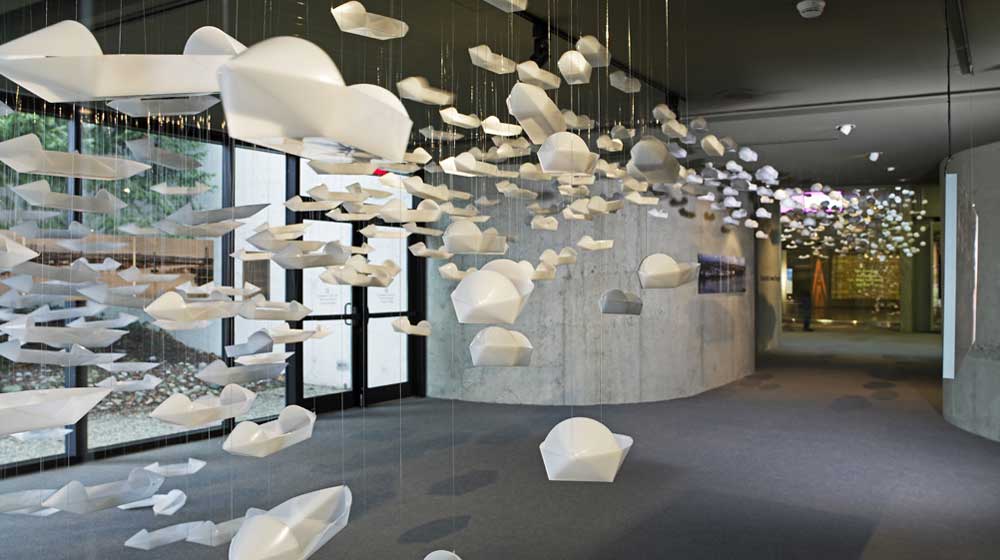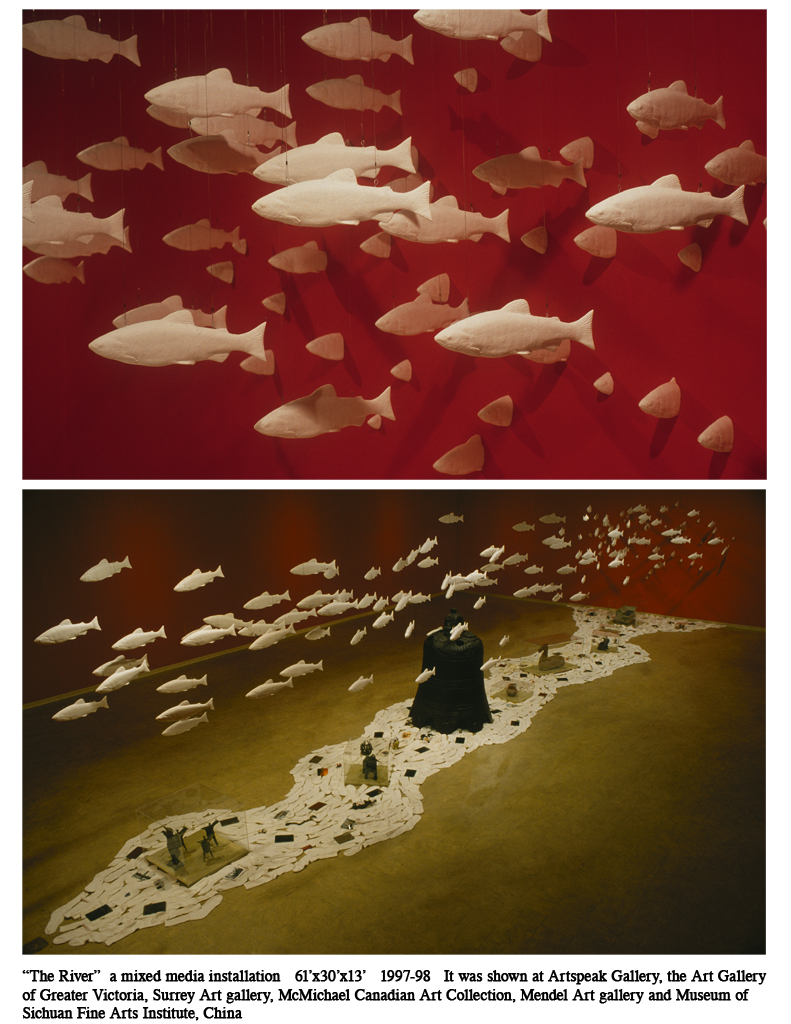Xiong Gu
Multi-media Artist living in Vancouver, Canada
Xiong Gu immigrated to Canada from China shortly after he witnessed the Tiananmen Square rebellion in 1989. He felt discouraged about his country’s policies and was determined to be a free and contemporary artist. Given the opportunity to leave China, he immigrated to Canada, sadly leaving behind his wife and young daughter. Xiong worked as an artist-in-residence in Banff and then moved to Vancouver in 1990. A year later, his family joined him.
Originally from the Chongqing, Xiong’s roots as an artist began when he was a teenager sent into forced labor in rural China during the Cultural Revolution. While a laborer, excluded from society and separated from family and home, he captured in drawings his feelings about and experiences of living in deprivation and in isolation. His art provided him strength, perspective, and a method of remembering what he endured.
Xiong Gu’s life may have been very different today if he had stayed in China. He kept the drawings of his years as a forced laborer in notebooks to which he recently referred, reflecting on how far he’s come in his life’s trajectory: surviving the Cultural Revolution, breaking out of so many restrictions inflicted in China, and rejoicing what he is today—a free, contemporary artist, which would not have been possible had he remained in China. In 2013, he spent two months in an artist complex in Dusseldorf that was built in 1937 by the Nazi Government to showcase art. Through that experience he realized that the Cultural Revolution shared similarities to Nazi Germany in terms of repression, identity, and tight restrictions of art and culture.
While Cultural Revolution ended in 1976, the Chinese government maintains a strong reign on public art venues—they are essentially propaganda tools of the government. In the last several years, private galleries across the country exhibit and sell experimental, contemporary artists work. However, it is difficult to know for how long. The famous Ai WeiWei, an outspoken and defiant artist against China’s policies and human-rights abuses, has lost his freedom. While the authorities destroyed his art studio, physically assaulted him, and has forbidden him from talking to journalists and using the Internet, he continues to defy the authorities. They are holding his passport, preventing him from traveling.
A prolific multi-media artist, Xiong works in painting, drawing, printmaking, sculpture, photography, video, digital imagery, text, performance art, and installation. He has also published two books and 10 solo exhibition catalogues, and 11 book covers. His work focuses on the creation of a hybrid identity arising from the integration of different cultural origins. His art reflects his personal and cultural expressions concerning sociology, geography, economics, politics, and literature, as well as the dynamics of globalization, local culture, and identity politics. Through this kaleidoscope of expressions and experiences, Xiong’s personal pursuit is the creation of an entirely new identity and a new level of being.
Exhibiting nationally and internationally, his credits include more than 40 solo exhibitions and three public art commissions. He has participated in over 100 prominent national and international group exhibitions including Border Zones: New Art Across Cultures, (Museum of Anthropology, Vancouver, 2010); Art Is Nothing – 798 Art Festival (Beijing, China); Post Avant-grade Chinese Contemporary Art—Four Directions of the New Era (Hong Kong, 2007); Starting from Southwest (Guang Zhou Art Museum, China); the Shanghai Biennale (2004), where he was one of four Canadian representatives; MultipleCity (Panama, 2003); Le Mois de la Photo (Montréal, 2001); the Montréal Biennale (2000), the Kwangju Biennale (Korea, 1995); and the ground-breaking exhibition China Avant-Garde at the China National Museum of Fine Arts (Beijing, 1989). His work is represented in the collections of the National Gallery of Canada, the China National Museum of Fine Arts, and the Vancouver Art Gallery, among many other museums and private collections.
Xiong has done three large public art projects in Canada and United States, such as the Safeco Field, Washington State Major League Baseball Stadium, Seattle and the Seattle Public Library Columbia City Branch, Seattle, WA, USA; the MacDonald Stewart Art Centre Donald Forster Sculpture Park, University of Guelph, ON, Canada. His writing and art works are published in art catalogues, magazines and newspapers. His artwork has received significant critical recognition including reviews in the international art magazines, Flash Art and Art in America, and The New York Times. The documentary The Yellow Pear: The Story of Xiong Gu from the series A Scattering of Seeds: The Creation of Canada was broadcast on The History Channel in March, 2001. In the capacity of curator, Xiong Gu has organized critically-acclaimed exhibitions of work by emerging artists in Canada and China.
Xiong received his BFA and MFA degrees from the Sichuan Fine Arts Institute in Chongqing, China. He is a professor in the Department of Art History, Visual Art, and Theory at the University of British Columbia and is engaged in the disciplines of installation, painting, drawing, photography and contemporary art theory.





